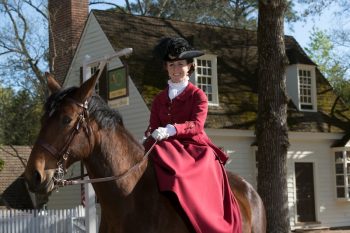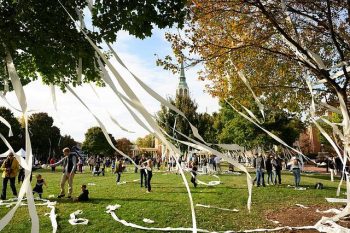Editor’s Note: Joel Tauber, professor of art, premiered his documentary, “Sick-Amour: A Love Story,” in May at the Carmarthen Bay Film Festival in Wales. The 77-minute film celebrates a lonely, forlorn tree in the middle of a parking lot at the Rose Bowl Stadium in Pasadena, California. The latest film expands and updates Tauber’s 2010 film of the same name.
Besides the films, Tauber describes “Sick-Amour” as “an activist and public art project” and an art installation featuring 15 videos, 15 interviews, sculptures and a series of photographs. Wake Forest Magazine asked Tauber, who has been teaching courses on filmmaking and video art since 2011 at Wake Forest, to write about his project. — Maria Henson (’82)
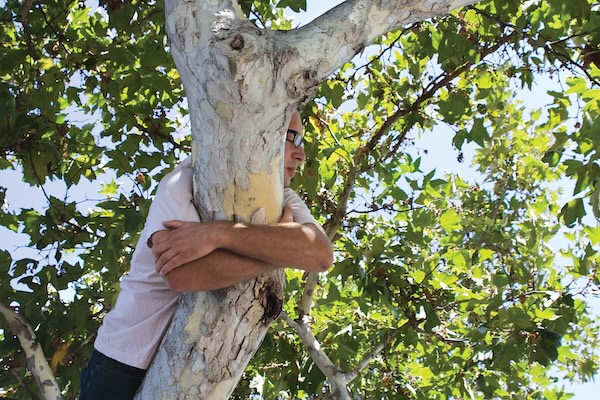
“Hugging The Tree” (photo direction: Joel Tauber, shot by Liz Rubin)
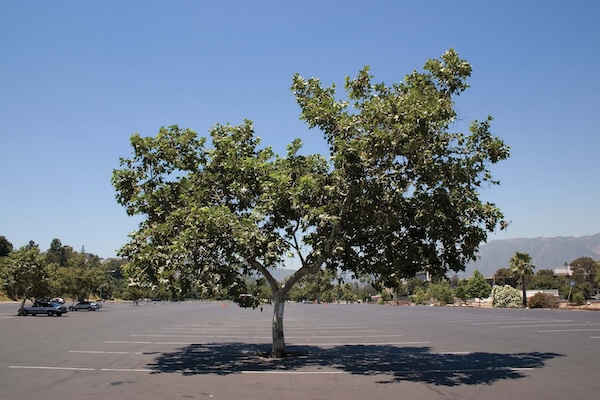
“June 12, 2005: I met the tree, and I fell in love,” from “Sick-Amour,” a project that includes two movies, a public art project, an installation and activism. All photos in “Stopping to notice” are from “Sick-Amour” with Tauber’s quoted captions.
WHEN I MOVED to Winston-Salem in 2011 with my wife, Alison, our 1-year-old son, Zeke, and our yet-to-be-born son, Ozzie, we were excited to set roots and build our family here. We were also committed to nurturing and honoring our roots beyond Winston-Salem, including our family in California, and elsewhere, that was, and is, an important part of our life. This family extended beyond our human relatives because, on a beautiful summer day in 2005, I decided to adopt the Tree. And that meant that the Tree, as well as its yet-to-be-born 200 offspring, had become part of our family as well.
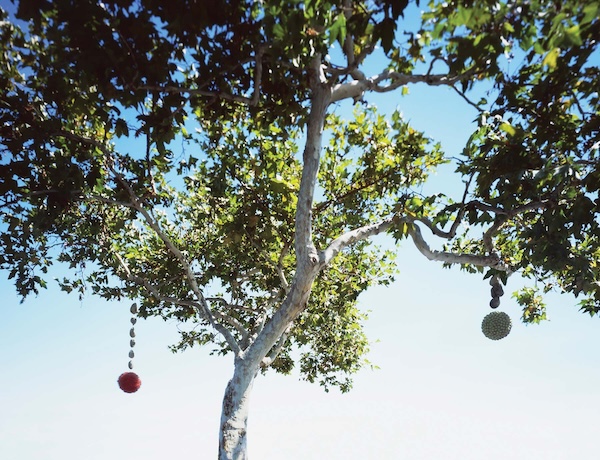
“The Tree Adorned With Earrings” (photo direction: Joel Tauber, shot by Ian Hunter and Star Rosencranz)
I had passed by the Tree many times on my way to the Rose Bowl Aquatics Center, where I used to swim when I lived in Los Angeles. The Tree lived right in the middle of one of the parking lots by the aquatics center: a particularly giant one, Lot K, directly in front of the Rose Bowl Stadium. One of the biggest football stadiums in the world.
But I hadn’t really met the Tree until I made the conscious decision to slow down. To look at the world, even as it was moving rapidly, more slowly. To see the landscape around me more fully. And to notice more of the organisms that were inhabiting that landscape with me.
The Tree was calling me, and I could finally hear it. I could finally see it. And it was as if I was struck by lightning.
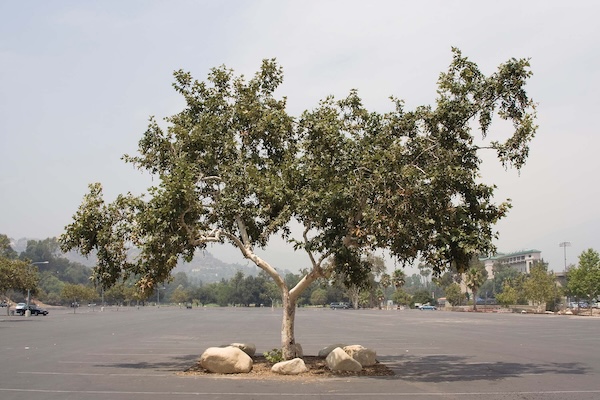
“July 30, 2007: The Tree is protected by a boulder barrier!!!”
The Tree was gorgeous! How could I not have seen its beauty before? Its speckled skin, so strong and fragile at the same time, slowly peeling, making way for new layers.
Unbelievably large green leaves, luminous, offering shade and oxygen to me and everyone around me, whether we deserved it or not. Gorgeous strings of fruit balls, both male and female, hanging erotically, ready to create new life, if they could only get lucky. Filled with hope that somehow, by some miracle, its pollen might reach another tree, even if there were no other trees within shouting distance. Focused on its potential offspring, on life beyond itself. Sending its seeds into the wind, hoping that its seeds might somehow blow off to some distant, green land — beyond the endless cars, market and stadium — where new life might flourish.
The Tree was proud and alive, against all odds. It rose triumphantly and defiantly from the giant sea of asphalt that engulfed it. Two arms reached upwards toward the sky. Was it a plea for help? A prayer? An expression of bafflement? I was captivated. I was in awe. I approached the Tree. Slowly. And I was immediately filled by an overwhelming sense of sadness. I could not believe what I saw.
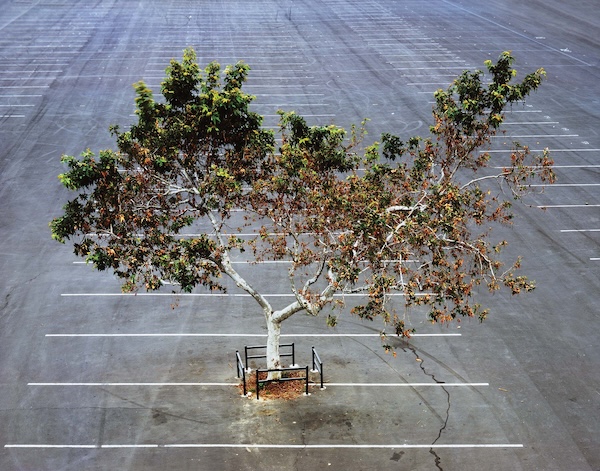
“Sick-Amour: A Love Story,” won Best Docu-Feature at the Chauri Chaura International Film Festival in Gorakhpur, India, in August.
And I worry that we haven’t learned to prioritize our environment and all the species who live here with us. I worry that we haven’t learned that we are all interconnected, that the lives of all species are intertwined.
Terrible, unjustifiable pain. Deep, horrific wounds. Horrendous gashes. Cars had repeatedly hit the Tree, and shameful, permanent reminders of those assaults marred the trunk. The trunk looked like it had survived a long, terrible war; and, indeed, it had. A war that it obviously wanted no part of — inflicted upon it by all of us collectively, because we were too blind to notice, too selfish to care.
I felt ashamed. Deeply ashamed. And my shame only grew as I kept looking. I saw that all too many of the gorgeous leaves were wilting, turning brown, even though it was the middle of the summer. I understood what should have been obvious from the outset: The Tree was terribly hungry. Probably even starving. And we were all, collectively, responsible.
Our asphalt was starving the Tree of water and oxygen. We had left the Tree only a tiny 4-foot by 4-foot-square pit of dirt to get the water and oxygen that it so desperately needed. And I could not understand why we were so cruel. Just so it would be slightly easier to park our cars? Just so our shoes wouldn’t get dusty?
The Tree was having a miserable time, and I could not just stand there and watch it suffer alone. I had to do something. I had an ethical responsibility to help the Tree.
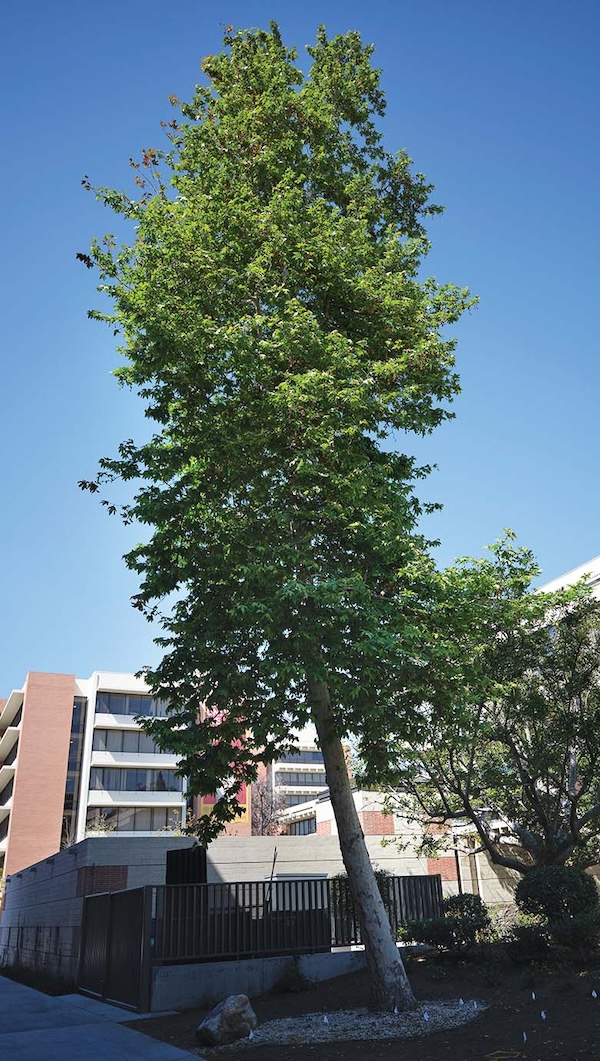
Tree Babies have been planted throughout California, at homes, schools, parks and museums. “Tree Baby: University of Southern California, March 9, 2022”
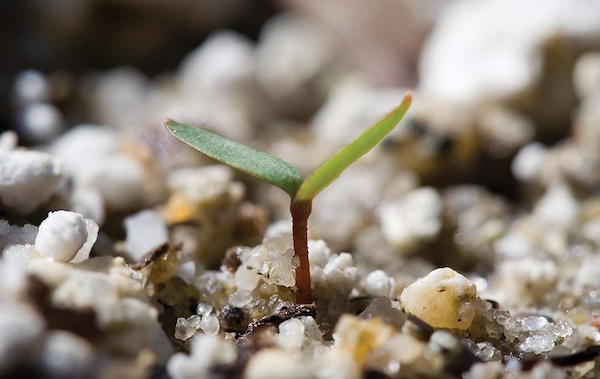
“February 16, 2007: The Tree Babies Have Arrived!!!”
So, I decided to devote myself to the Tree to try to improve its life — watering it with giant water bags, installing tree guards to protect it from cars, building giant earrings to celebrate its beauty, lobbying to remove the asphalt beneath its canopy and to protect it with a ring of boulders and helping the Tree reproduce.
I was thrilled when the Rose Bowl and the City of Pasadena removed 400 square feet of asphalt beneath the Tree’s canopy and placed a ring of boulders around the Tree for protection. And I was overjoyed when, with the help of the Theodore Payne Foundation, 200 Tree Babies were born.
People and institutions adopted the Tree Babies, and the Tree Babies spread their roots in their new homes. The Tree was no longer alone. It had a family. And then, in 2007, just two years after I had met the Tree, I met Alison; and it was like being struck by lightning all over again. We got married underneath the Tree’s canopy, and our families danced beneath its beautiful limbs and green leaves. We were all beaming.
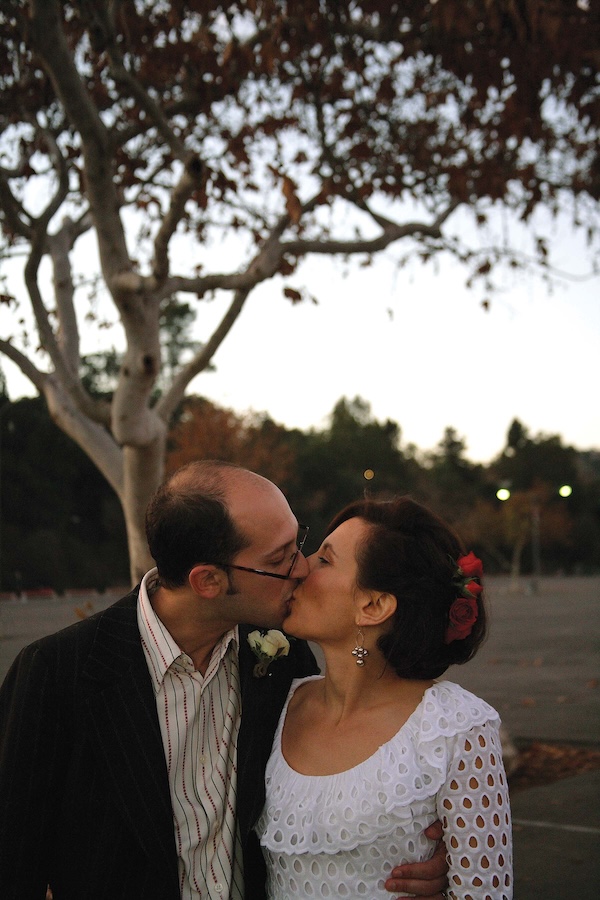
“We Married Underneath The Tree” (photo direction: Joel Tauber, shot by Tom Atwood)
Years passed. I continued visiting the Tree as often as I could, even after I moved to North Carolina. And all was good — for the most part, anyway. Until suddenly, in 2019, my worst fears were realized. I went to visit the Tree, as I often did, to hug and kiss it and to offer it water. But the Tree was gone. And I couldn’t believe it. I was in shock. Terrible shock. And my grief was overwhelming.
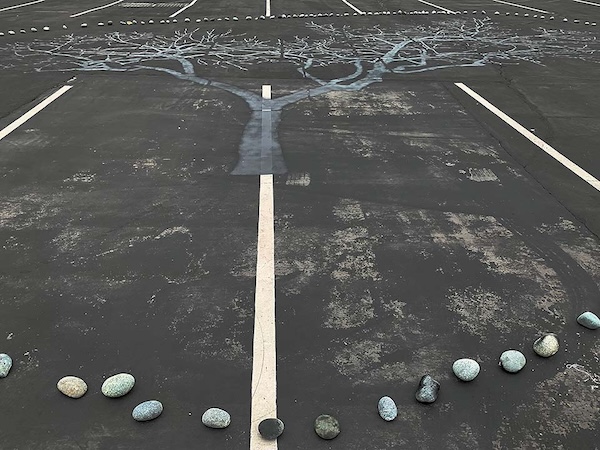
“Memorial For The Tree”
The Tree had been removed — efficiently and ruthlessly — by the city; and a 400-square-foot slab of concrete now stood in its place. Why did the city do this?! It’s extraordinarily hard to understand. But I see how often our governments and corporations have killed trees in the name of convenience and economic development. And I worry that we haven’t learned to prioritize our environment and all the species who live here with us. I worry that we haven’t learned that we are all interconnected, that the lives of all species are intertwined.
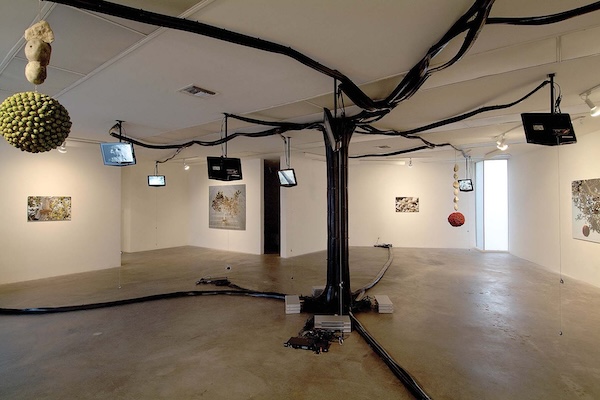
"Sick-Amour” installation at Vielmetter Los Angeles (installation photo: Gene Ogami)<br />
The Tree is important. It needs to be remembered. It needs to be honored. So, I made a life-size drawing of the Tree. A shadow of the Tree. And in the middle of the night, I painted it where it once lived. Then, at the crack of dawn, people gathered with me to place rocks around where the Tree once stood and to share thoughts and stories about the Tree.
Afterward, I went to visit as many of the Tree Babies as I could. So many of them are thriving and growing beautifully! They fill me with hope.
“Sick-Amour: A Love Story” will screen at the Outer Banks Environmental Film Festival in Manteo, North Carolina, Nov. 1-3.

